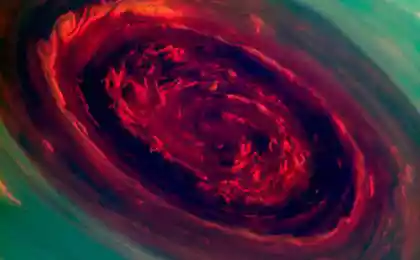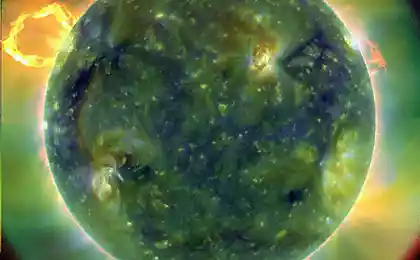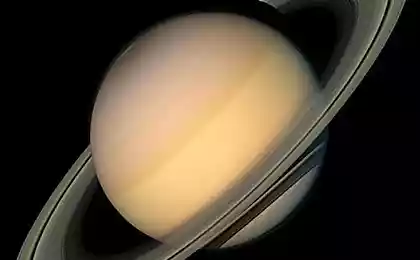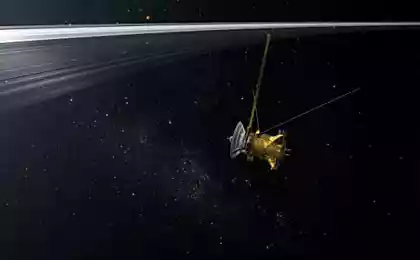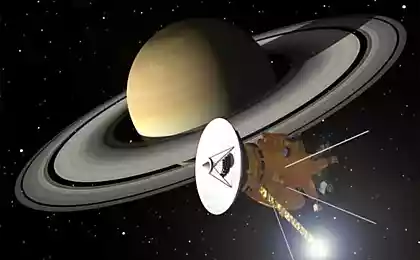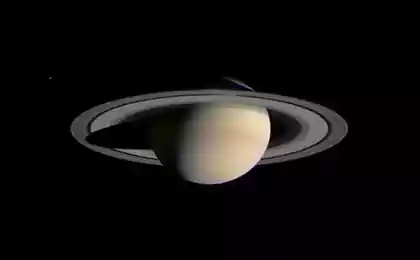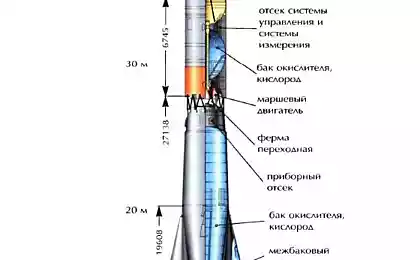721
Cassini station transmits high-quality images of Saturn's moon Dione
58,012,676
When you click the photo to open in full size (NASA / JPL-Caltech / Space Science Institute) i>
Space station Cassini continues its important work on the study of the gas giant Saturn as the planet and its rings and moons. Cassini has already done a lot to science, and now completed the next task - sent the clearest on record pictures of Dion. This is the fourth satellite of Saturn.
August 17, 2015 Station пролетела at a distance of 475 kilometers from the surface of Dione. This is the fifth in a row closer to the satellite. One of the main tasks of the probe for the study of Dione - the study of gravitation. This, experts say, could explain the structure of the satellite. Now, however, scientists are not yet ready to announce details of the study - the fact that in the analysis of the data will take several months.
Unfortunately, soon Cassini mission will be completed. So, this year, the station approach with Dione is still 14 and 28 October and then December 19 will fly close to Enceladus (here, as scientists believe, a high probability of the existence of extraterrestrial life). October 28 Cassini will fly by at a distance of 49 kilometers from Enceladus.
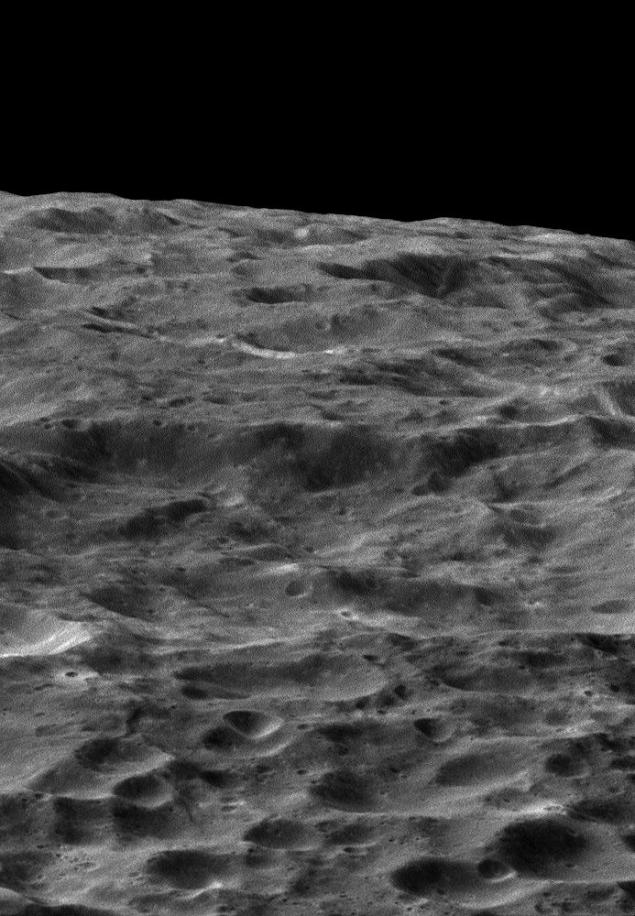
According to the plan the system will be able to fly through the frozen Schlei of particles that are emitted kriovulkanami Enceladus. During the passage of the probe will be able to determine the composition of the particles, which will help to clarify the details of the structure and composition of the inner layers of the satellite. It may be possible to prove the existence of liquid oceans under the icy surface of the satellite.

A complete set of images received by the station during a flyby of Dione, can be found here i>
Cassini will work in 2017, completing the important task of studying other satellites of Saturn, including Daphnis, Telesto and Epimetheus. However, these objects will pass the station at a distance of about 50 thousand kilometers. Then, at the end of 2017, Cassini mission will end.
In June, the Cassini spacecraft has photographed just three months, three of Saturn in the initial phase: Titan, Mimas, Rhea. Titanium is a bit vague, as we see only the cloud layers, which produce a similar effect. Titan's atmosphere refracts light, so visible and unique "swirls" slightly beyond the moon.
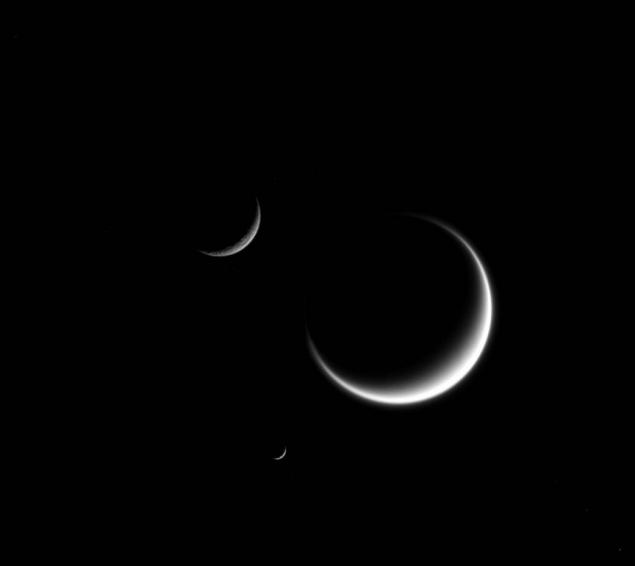
Back in 2004, when the station Cassini only the study of Saturn and Titan, scientists have discovered that the north pole of Titan's quite a lot of clouds. It was the local "late summer." Clouds have been observed until the spring, in the same northern hemisphere. Then, in 2010, was discovered a massive storm on Saturn, and the clouds are far fewer, they are almost gone.
It is worth noting that during his work (since 1997) Cassini passed a lot of interesting information on the Earth. The station showed rings of the giant planet, its moons, and some other nearby objects. Information regularly send station, is extremely important for science - thanks to the machine managed to better understand the nature of Saturn's rings, see the satellites of the gas giant as close as possible to explore the region.
Source: geektimes.ru/post/260676/
When you click the photo to open in full size (NASA / JPL-Caltech / Space Science Institute) i>
Space station Cassini continues its important work on the study of the gas giant Saturn as the planet and its rings and moons. Cassini has already done a lot to science, and now completed the next task - sent the clearest on record pictures of Dion. This is the fourth satellite of Saturn.
August 17, 2015 Station пролетела at a distance of 475 kilometers from the surface of Dione. This is the fifth in a row closer to the satellite. One of the main tasks of the probe for the study of Dione - the study of gravitation. This, experts say, could explain the structure of the satellite. Now, however, scientists are not yet ready to announce details of the study - the fact that in the analysis of the data will take several months.
Unfortunately, soon Cassini mission will be completed. So, this year, the station approach with Dione is still 14 and 28 October and then December 19 will fly close to Enceladus (here, as scientists believe, a high probability of the existence of extraterrestrial life). October 28 Cassini will fly by at a distance of 49 kilometers from Enceladus.

According to the plan the system will be able to fly through the frozen Schlei of particles that are emitted kriovulkanami Enceladus. During the passage of the probe will be able to determine the composition of the particles, which will help to clarify the details of the structure and composition of the inner layers of the satellite. It may be possible to prove the existence of liquid oceans under the icy surface of the satellite.

A complete set of images received by the station during a flyby of Dione, can be found here i>
Cassini will work in 2017, completing the important task of studying other satellites of Saturn, including Daphnis, Telesto and Epimetheus. However, these objects will pass the station at a distance of about 50 thousand kilometers. Then, at the end of 2017, Cassini mission will end.
In June, the Cassini spacecraft has photographed just three months, three of Saturn in the initial phase: Titan, Mimas, Rhea. Titanium is a bit vague, as we see only the cloud layers, which produce a similar effect. Titan's atmosphere refracts light, so visible and unique "swirls" slightly beyond the moon.

Back in 2004, when the station Cassini only the study of Saturn and Titan, scientists have discovered that the north pole of Titan's quite a lot of clouds. It was the local "late summer." Clouds have been observed until the spring, in the same northern hemisphere. Then, in 2010, was discovered a massive storm on Saturn, and the clouds are far fewer, they are almost gone.
It is worth noting that during his work (since 1997) Cassini passed a lot of interesting information on the Earth. The station showed rings of the giant planet, its moons, and some other nearby objects. Information regularly send station, is extremely important for science - thanks to the machine managed to better understand the nature of Saturn's rings, see the satellites of the gas giant as close as possible to explore the region.
Source: geektimes.ru/post/260676/
